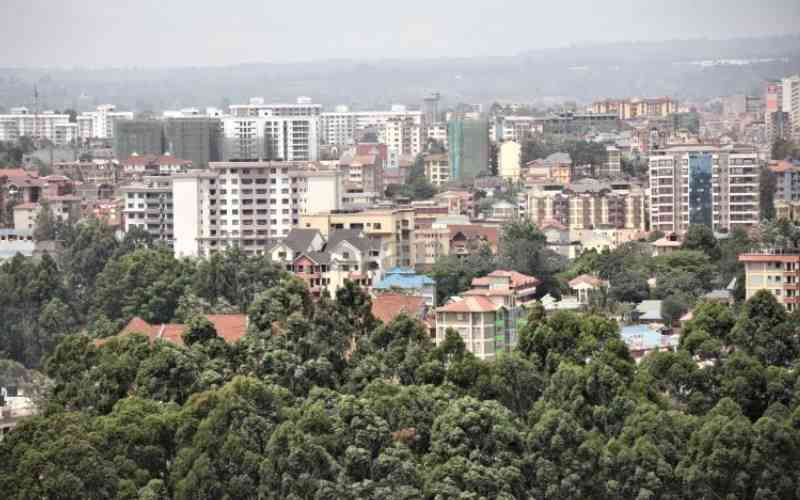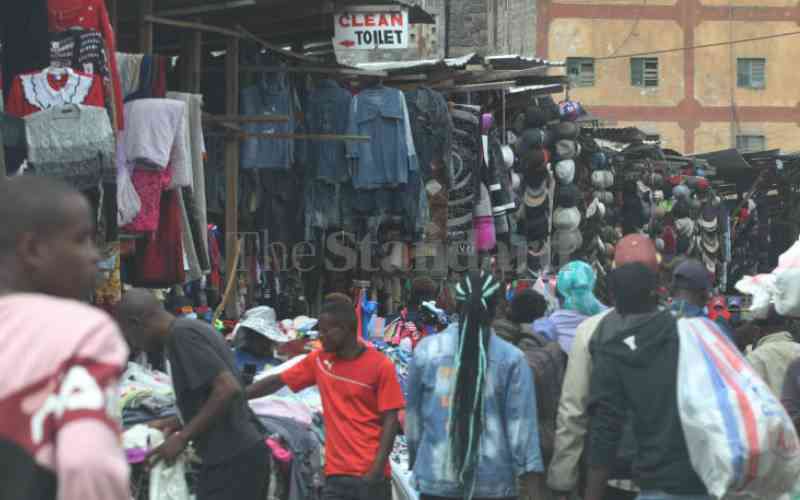By Kenfrey Kiberenge
It will be mixed fortunes for Kenyans as they desperately wait for the envisaged El Nino rains in October to ease the burden of water shortage.
On one hand, are Kenyans bogged down by effects of prolonged drought, such as severe food and water shortage and famine. As a result, they hope El Nino rains would bring good tidings. On the other hand, the torrents could result in human and animal deaths, landslides, floods, soil erosion, collapse of bridges and falling of telephone and electricity poles as witnessed in 1997/98. The damage cost Kenya Sh78 billion. The Kenya Meteorological Department has assured the public the impending rain will not be the typical El Nino.
 |
The 1997/98 El Nino rains cost the country Sh78 billion in damages. [PHOTO: FILE/ STANDARD] |
Director Joseph Mukabana told The Standard on Sunday the physical features, the Indian and the Atlantic oceans play significant roles in modifying the large scale circulation patterns, and thus also modify El Nino–related anomalies in the country.
Disaster Preparedness
"Thus, El Nino impacts vary not only from location to location and from season to season, but also from one El Nino event to another," Mukabana said. Kenya Red Cross Society is also putting in place measures to avert the effects of the rains. The Acting Head of Disaster Preparedness and Response Abdi Shakur said the society was awaiting the final word on the magnitude of the rains to determine preparedness. He said the society would rely on a two-day meeting among scientists, which is set to begin tomorrow in Nairobi. In this meeting, the magnitude of the rains will be ascertained.
The meteorological department has also scheduled a workshop to brief stakeholders on the latest forecast, next week. Mukabana said the current of sea surface temperature (SST) anomaly patterns points a high probability of enhanced rainfall during the short rains season (October-December) with a tendency of the rainfall extending to the usually dry January-February period. Energy Minister Kiraitu Murungi, when he announced electricity rationing a fortnight ago, said the meteorological department had informed the Government that El Nino is imminent. This is an indication even the Government is banking it, its magnitude notwithstanding. Many Kenyans also hold the viewpoint that the El Nino would end their woes.
Mr Maurice Moricho, a resident of Nairobi’s Komarock estate, says he prefers the rains, in spite of the consequences.
Charity Kamau, also a Nairobi resident, is also ready for the effects of the rains.
"I have a two-month-old baby whose nappies have to be cleaned daily. I am spending at least Sh300 daily to buy water," she says. But geologist Eliud warns should the rains reach the 1997/98 magnitude, the country is sitting on a time bomb. The Africa Development Bank estimated the national economic loss to the country at Sh78 billion.
A report published in January 1999 by the Centre for Health and the Global Environment, Harvard Medical School, outlined the diseases and economic losses that were occasioned by the heavy rains.
The Damage
The study, "Extreme Weather Events: The Health and Economic Consequences of the 1997/98 El Nino and La Nina", states the rains left damaged roads, bridges, railway lines, airports and telephone lines and hindered internal transportation, communication and trade. Trucks were marooned in mudladen roads while the tourism industry was also severely compromised because most roads to game parks were impassable. Kenya, a longtime exporter of tea and coffee, did not produce sufficiently for export and was forced to import the products to meet domestic demand. The country’s sugar, rice, and wheat yields were halved. Also up to 20 per cent of cultivated land was rendered useless.
Many European nations were also reluctant to import food goods from disease-laden Africa. For instance, the Saudi Government banned import of livestock from the Horn of Africa for fear of transmission of Rift Valley Fever. In July 1997, West Pokot and Uasin Gishu districts were severely hit with an outbreak that affected tens of thousands of residents.
Extremes in precipitation were reported along with famine. The severity of the outbreak warranted
the transfer of mobile units of medical personnel and equipment to remote areas.
 The Standard Group Plc is a multi-media organization with investments in media
platforms spanning newspaper print operations, television, radio broadcasting,
digital and online services. The Standard Group is recognized as a leading
multi-media house in Kenya with a key influence in matters of national and
international interest.
The Standard Group Plc is a multi-media organization with investments in media
platforms spanning newspaper print operations, television, radio broadcasting,
digital and online services. The Standard Group is recognized as a leading
multi-media house in Kenya with a key influence in matters of national and
international interest.
 The Standard Group Plc is a multi-media organization with investments in media
platforms spanning newspaper print operations, television, radio broadcasting,
digital and online services. The Standard Group is recognized as a leading
multi-media house in Kenya with a key influence in matters of national and
international interest.
The Standard Group Plc is a multi-media organization with investments in media
platforms spanning newspaper print operations, television, radio broadcasting,
digital and online services. The Standard Group is recognized as a leading
multi-media house in Kenya with a key influence in matters of national and
international interest.










